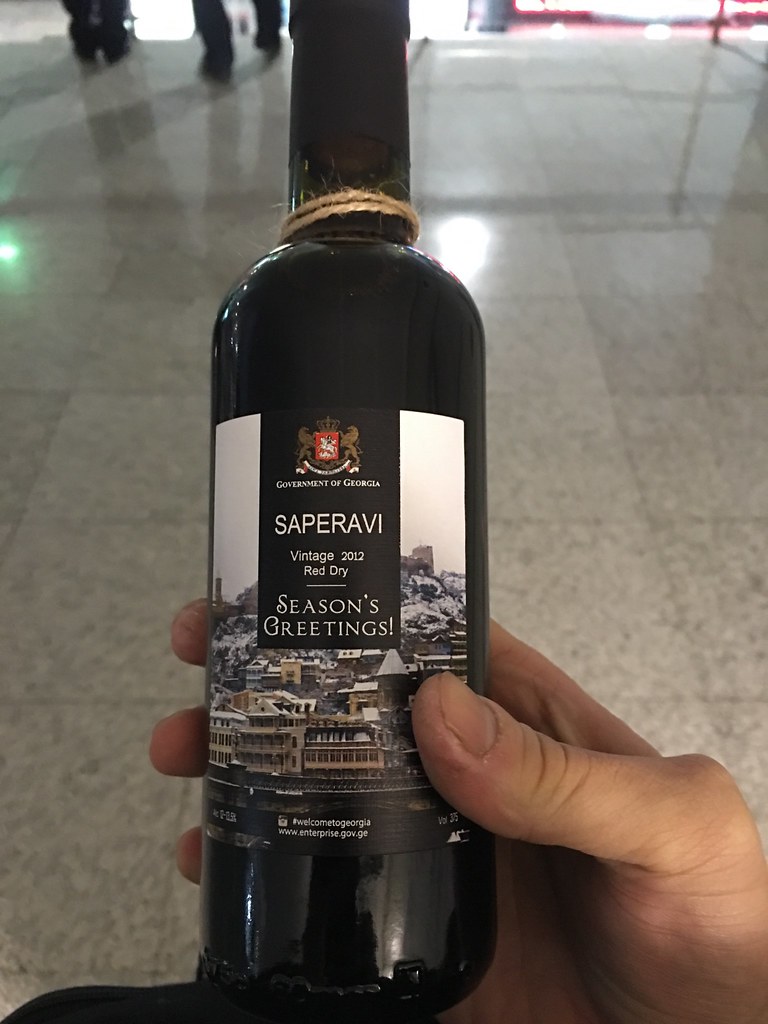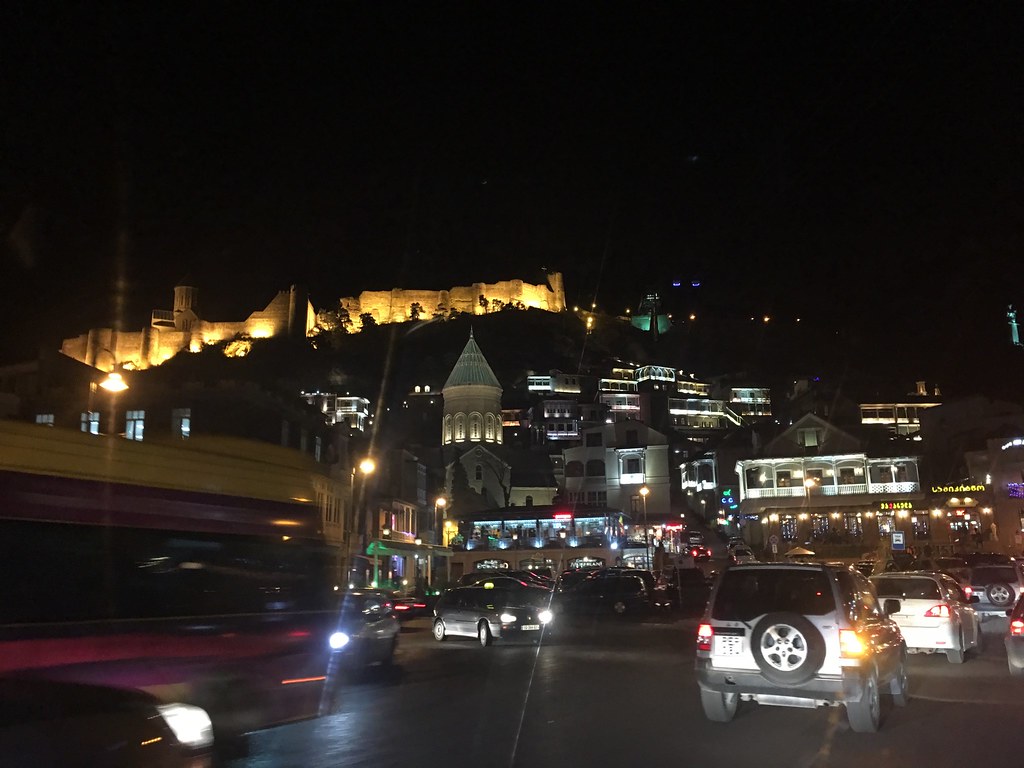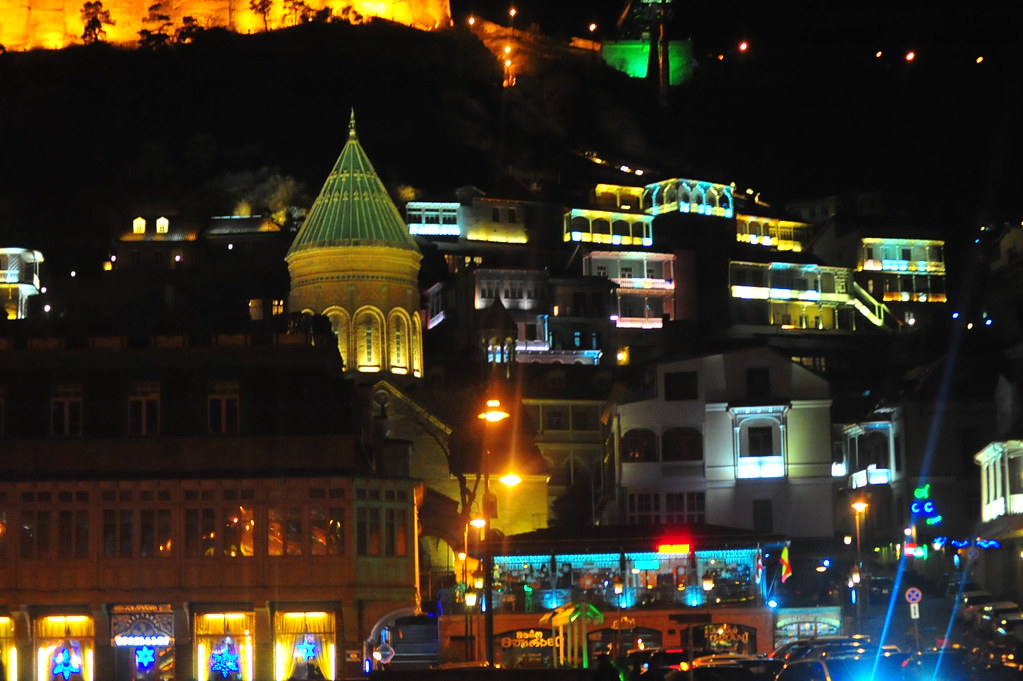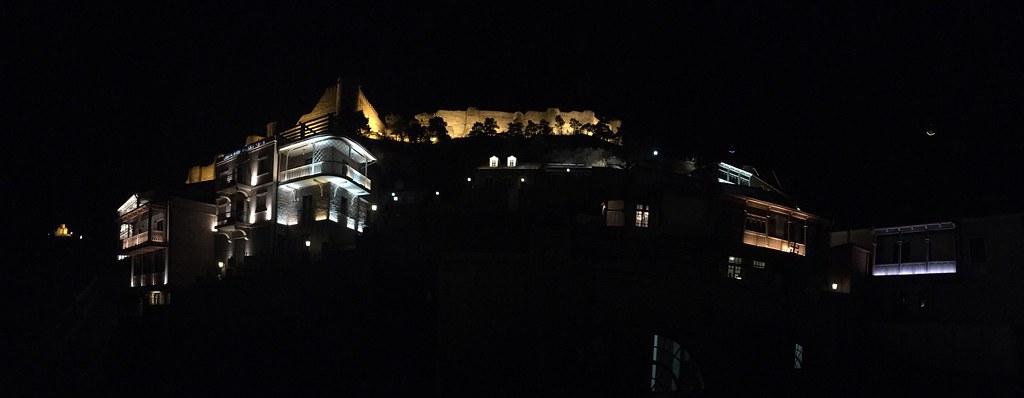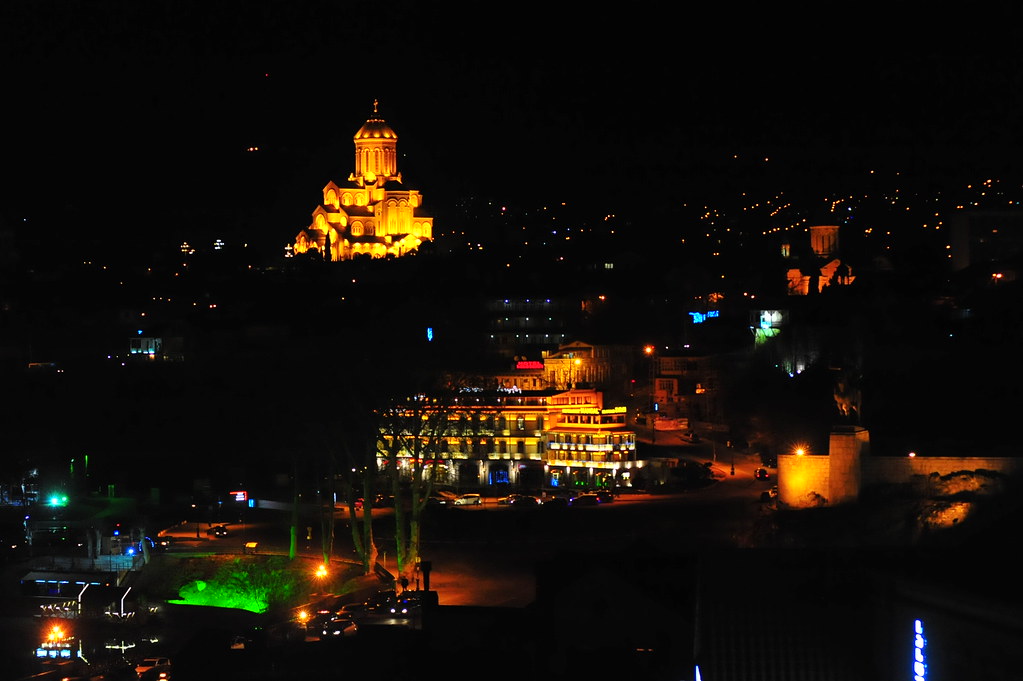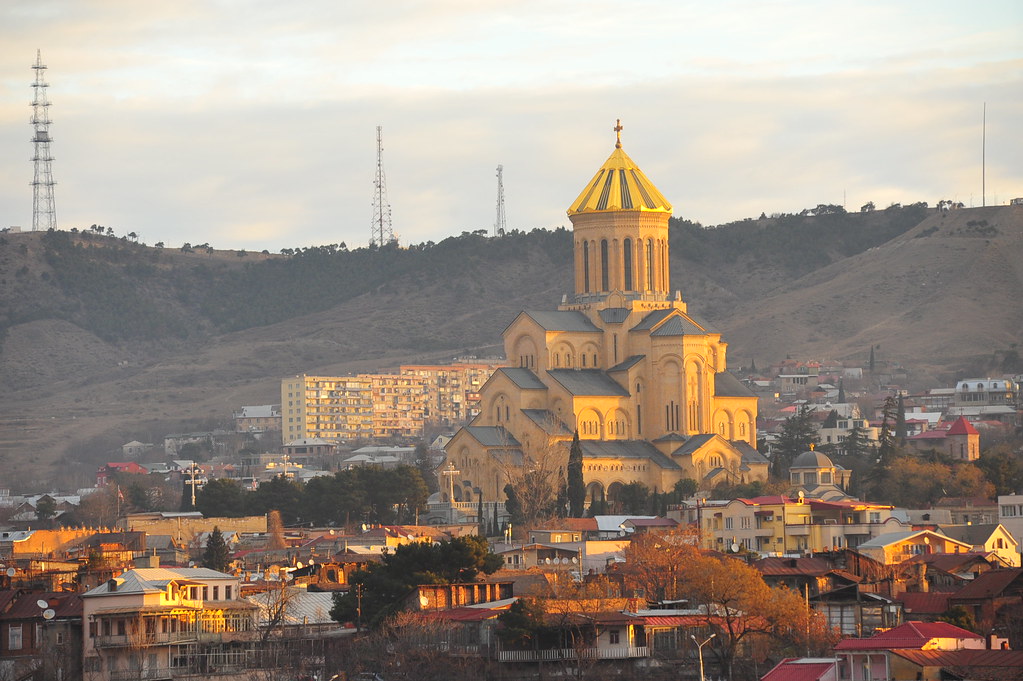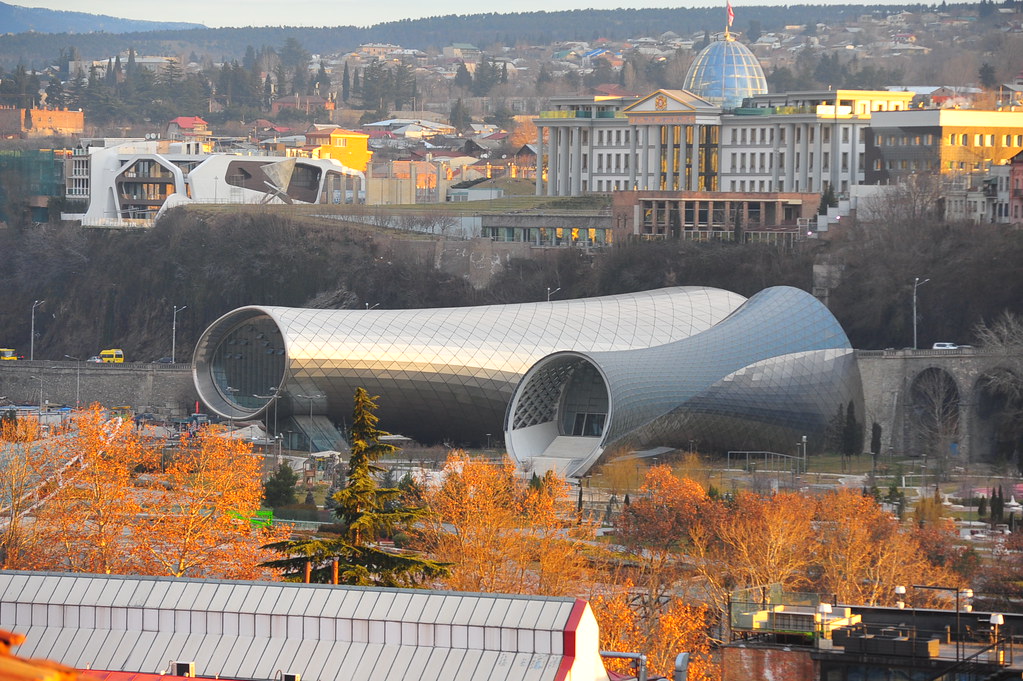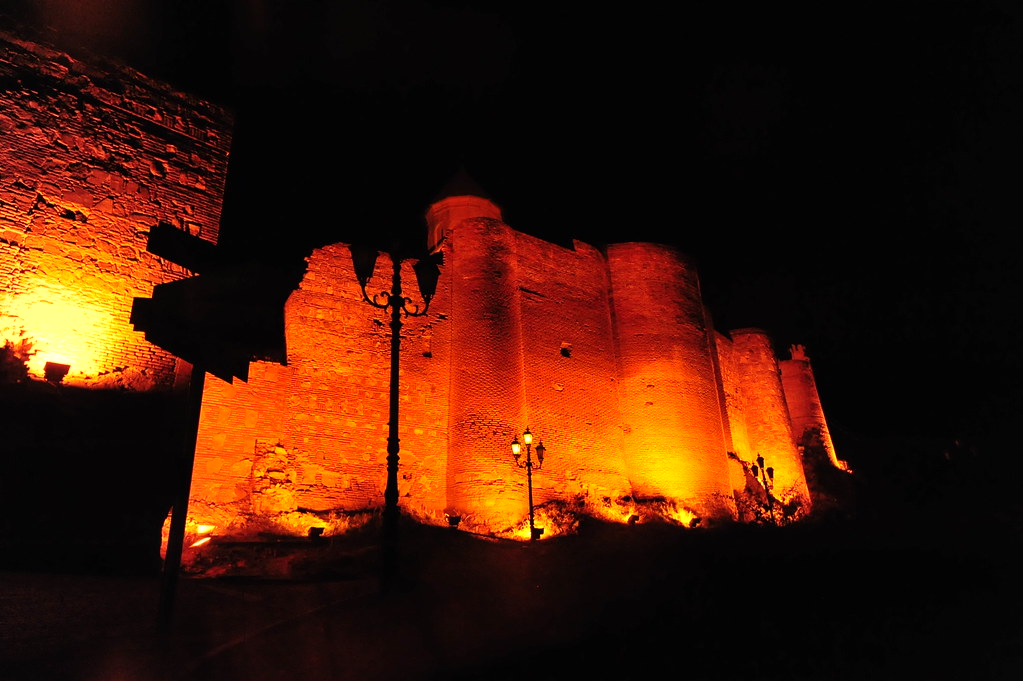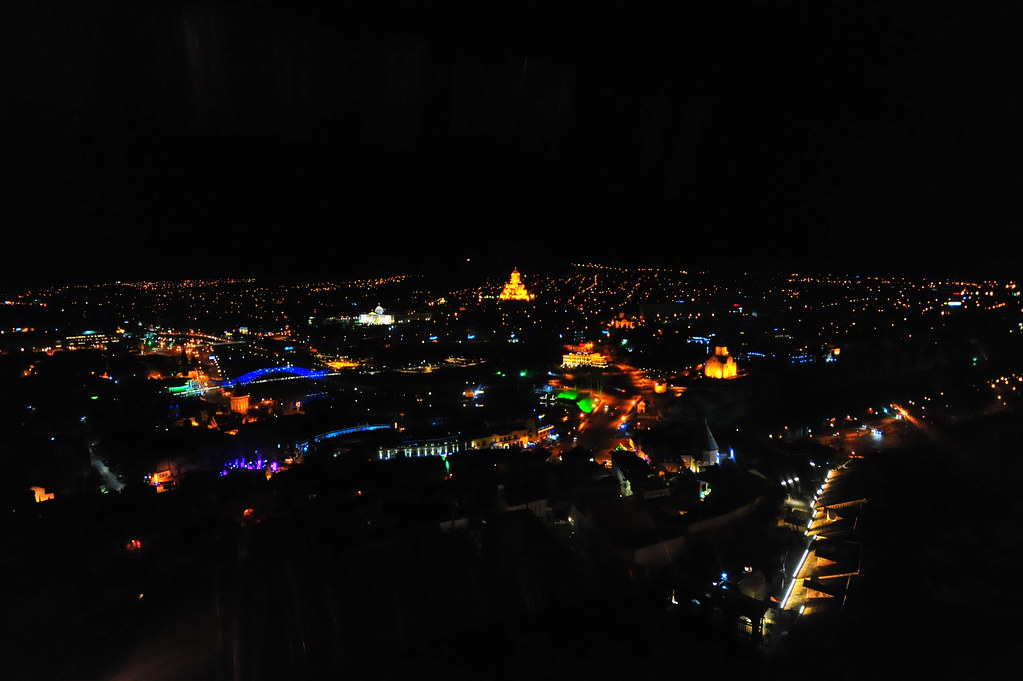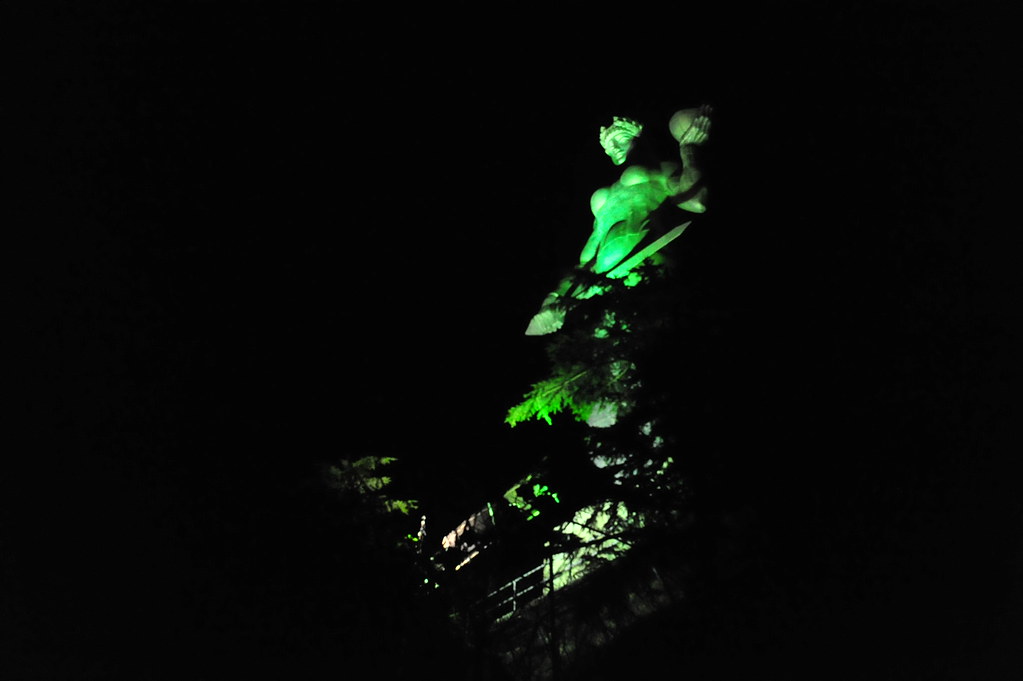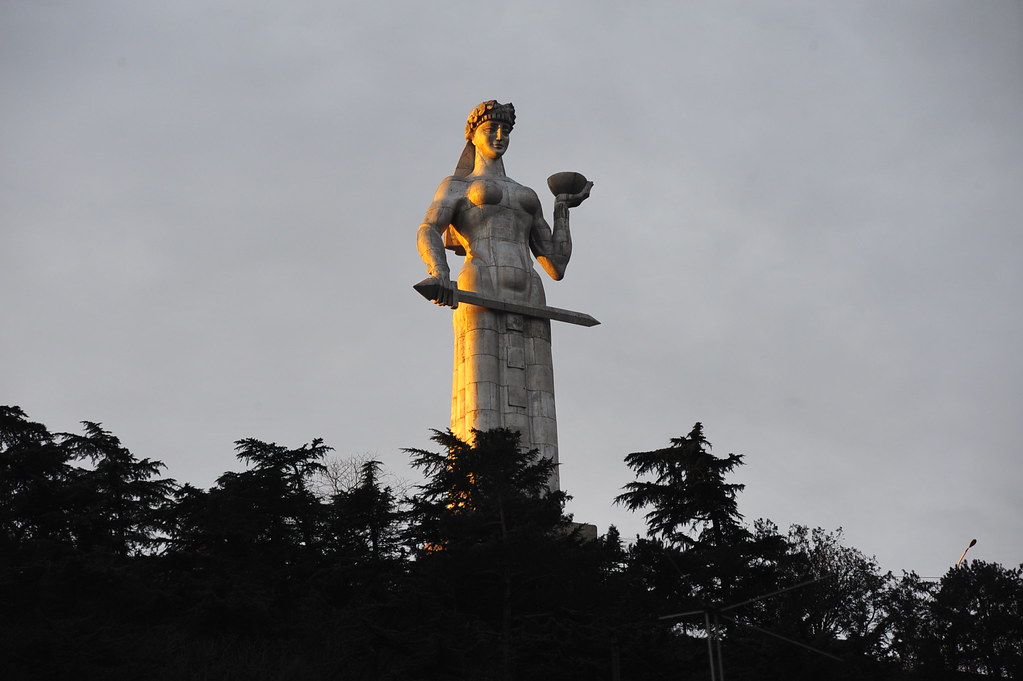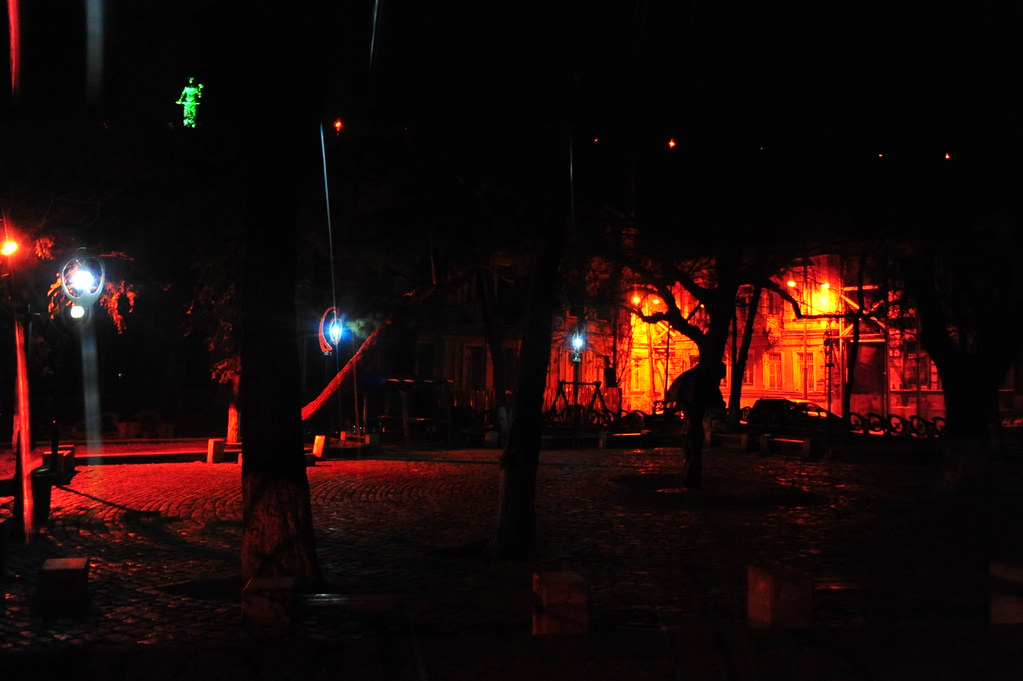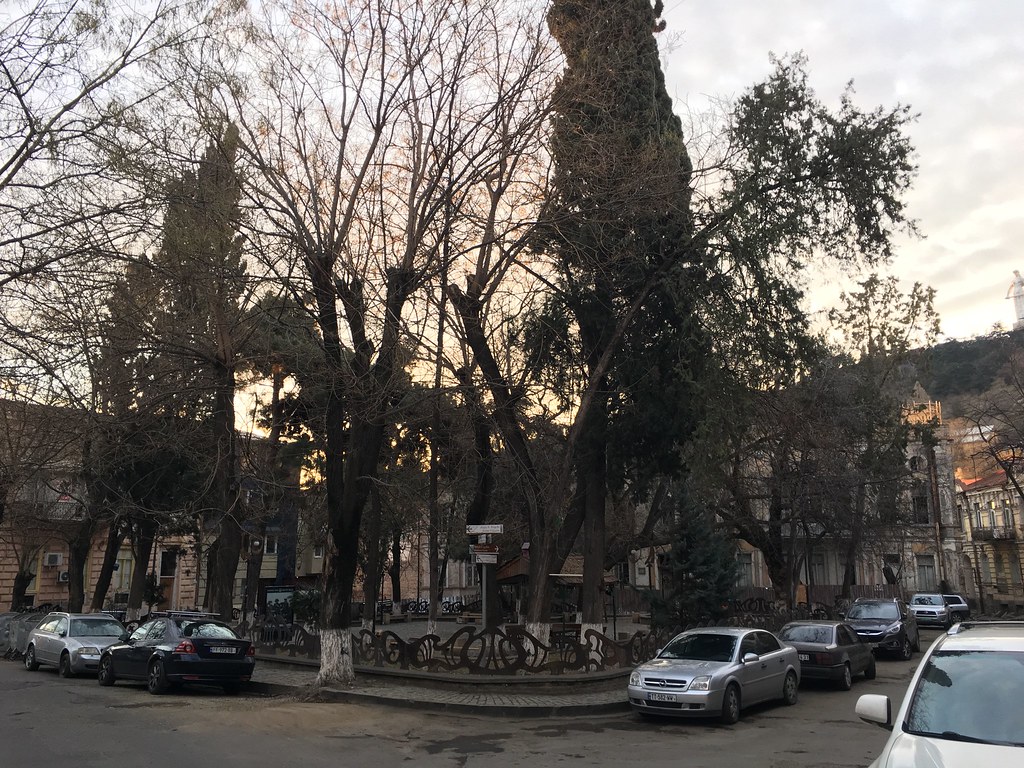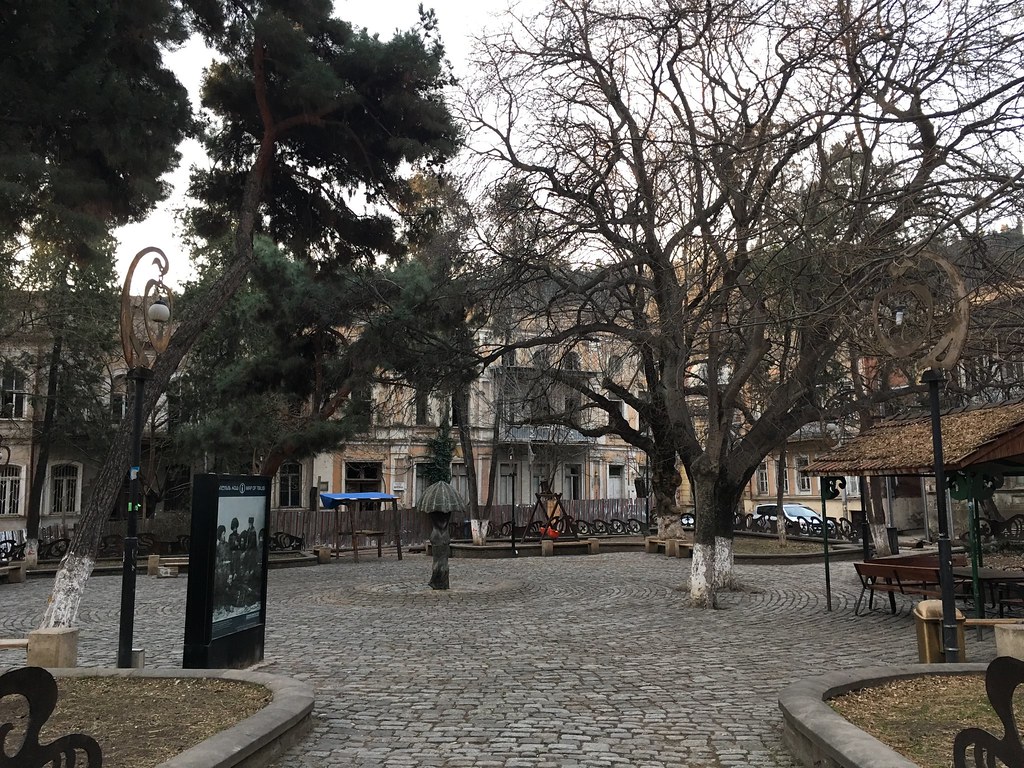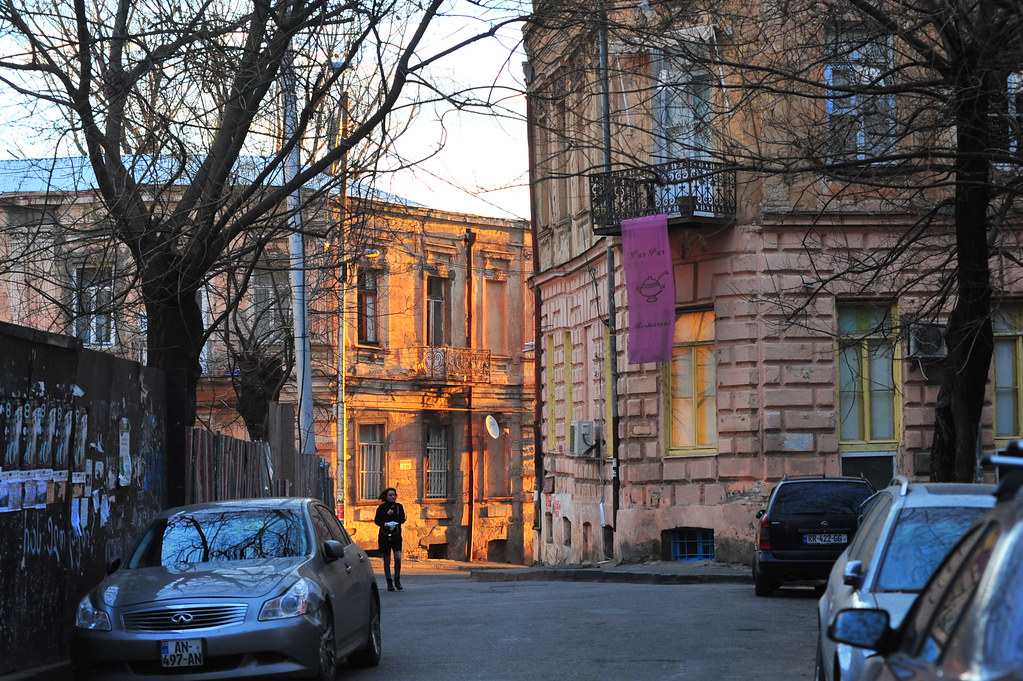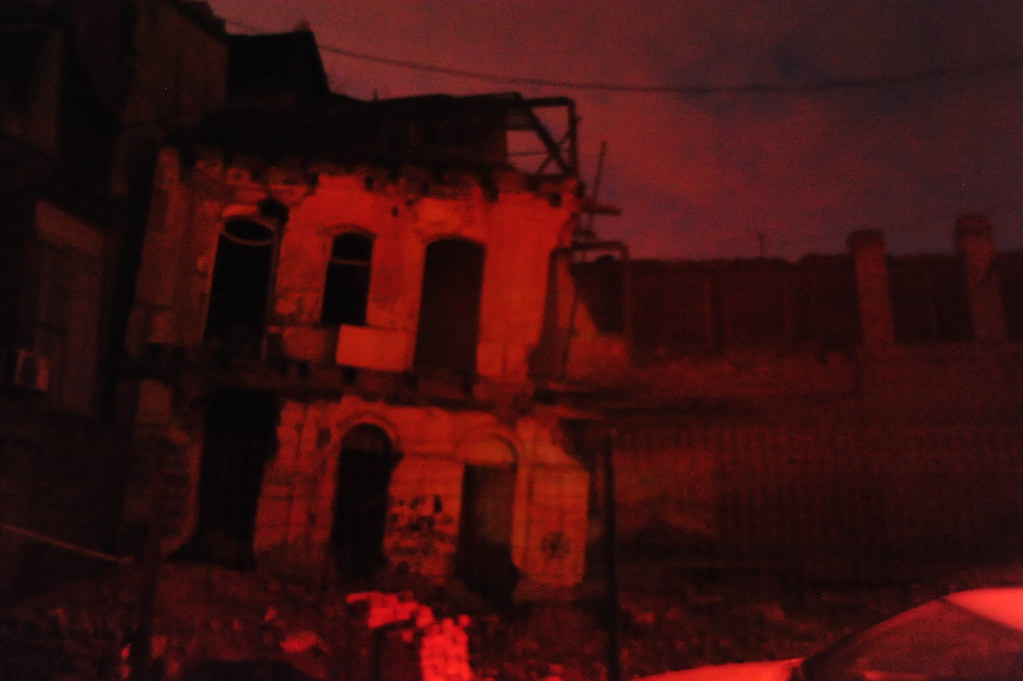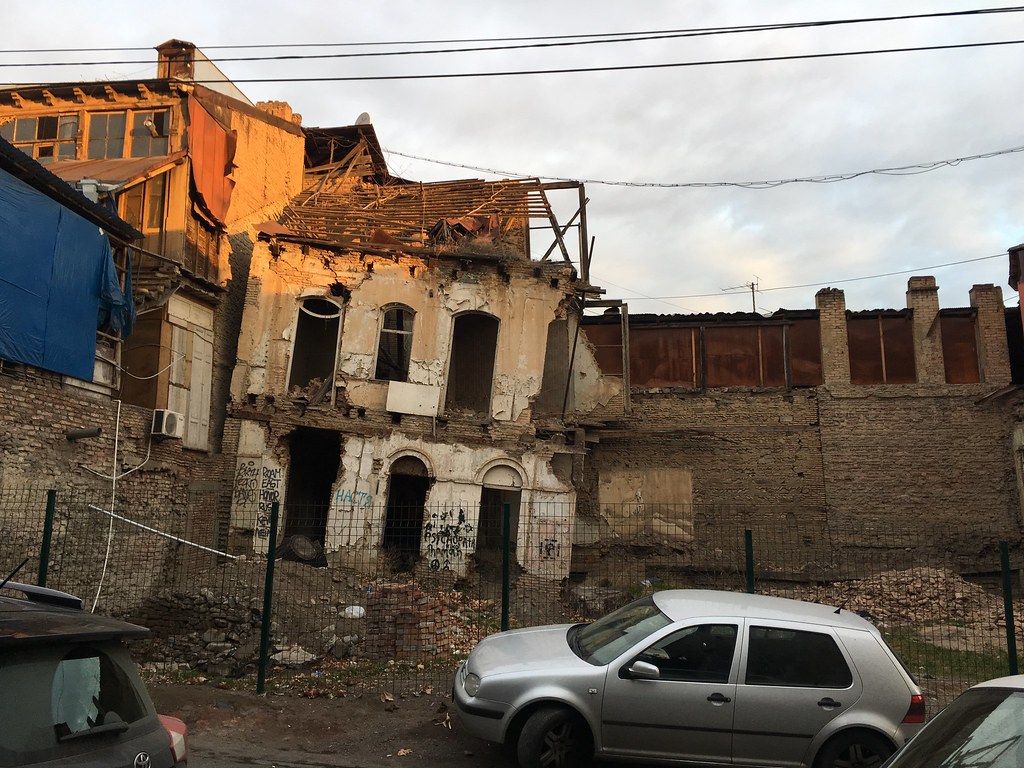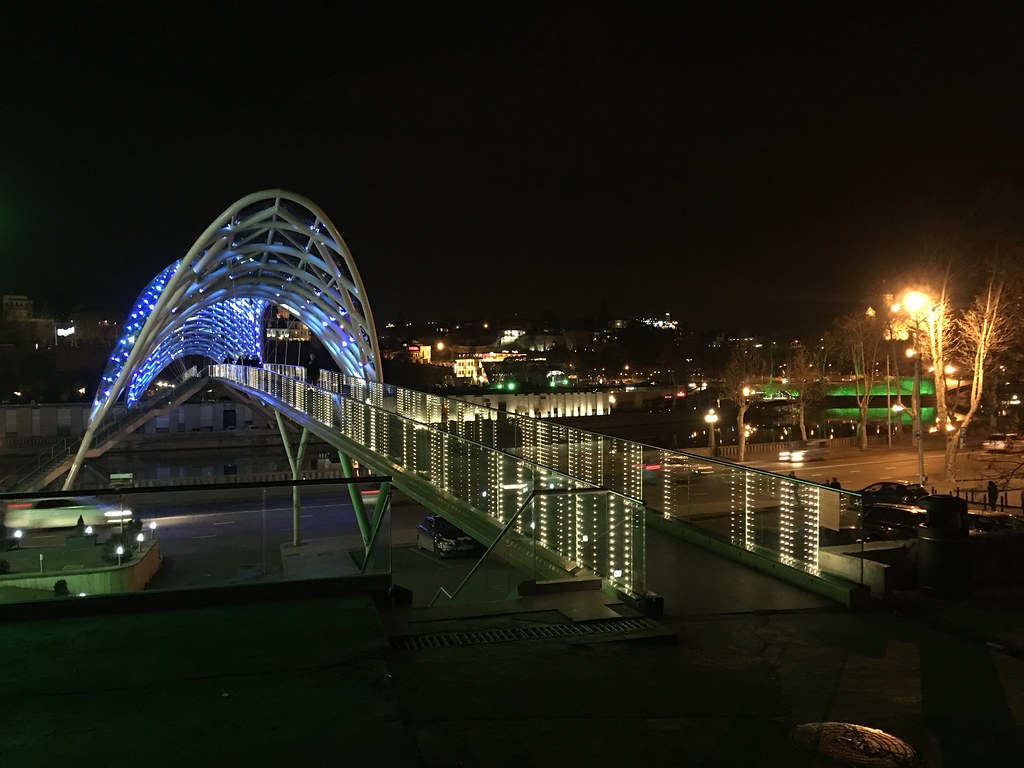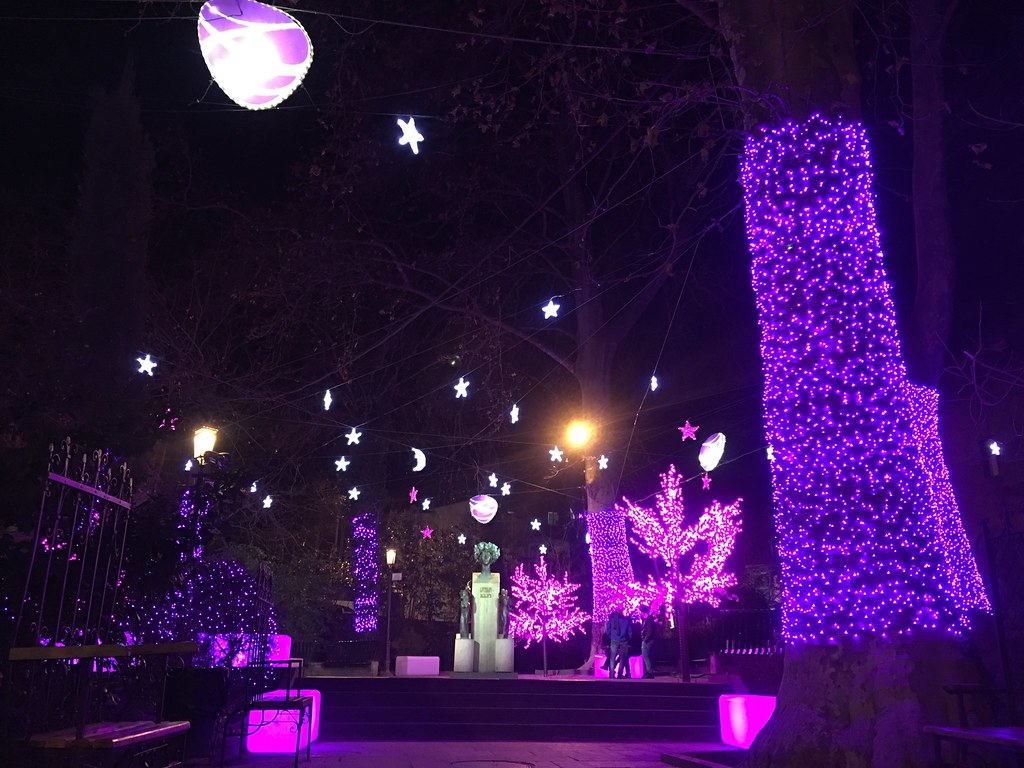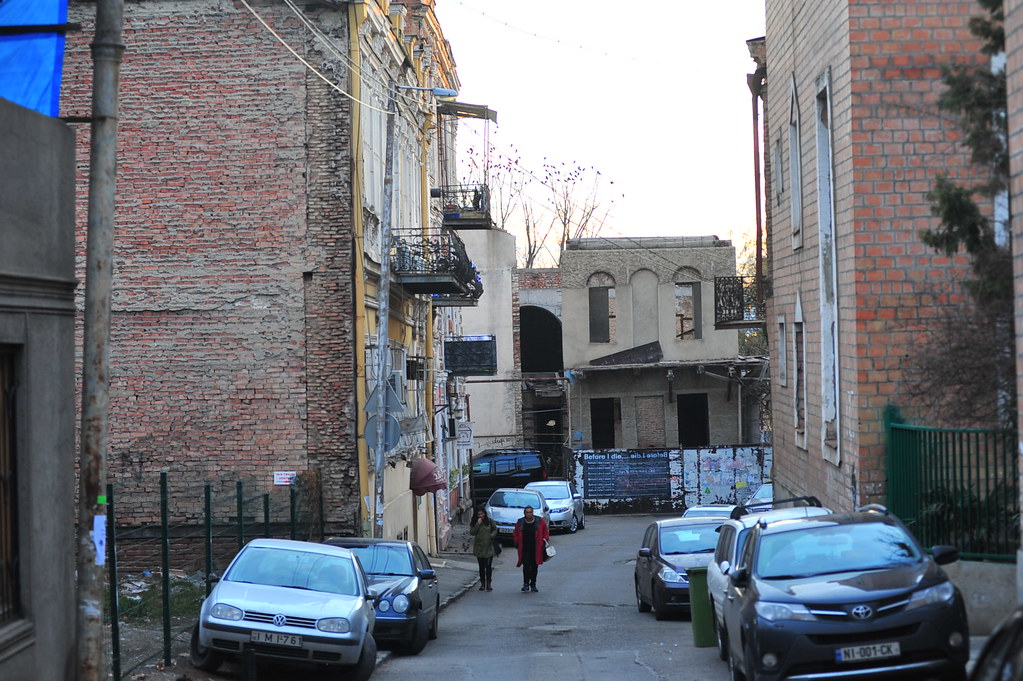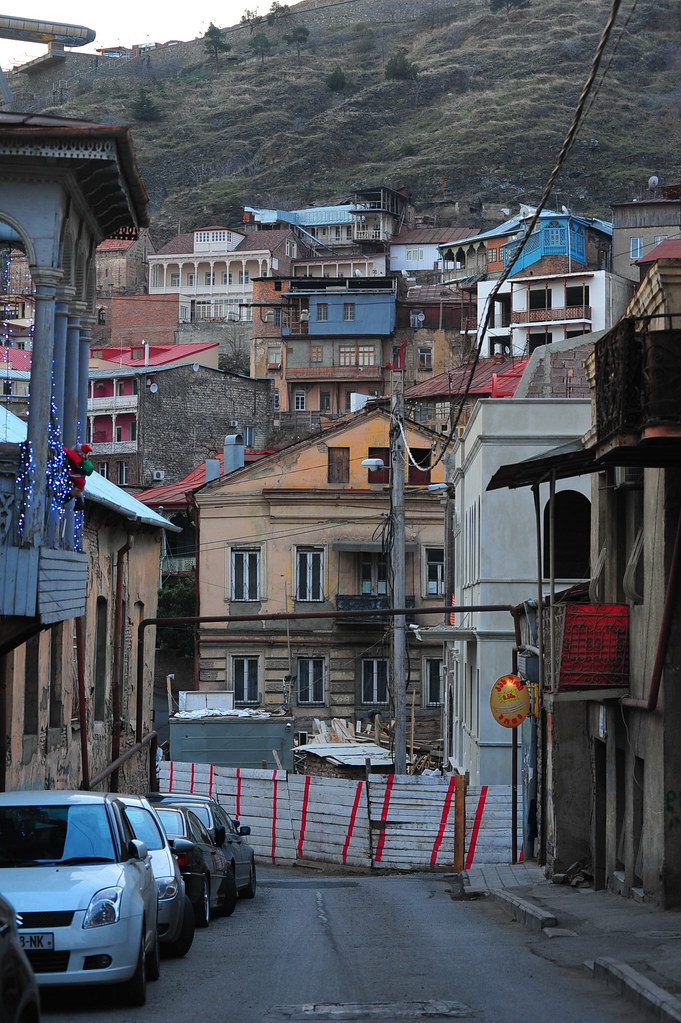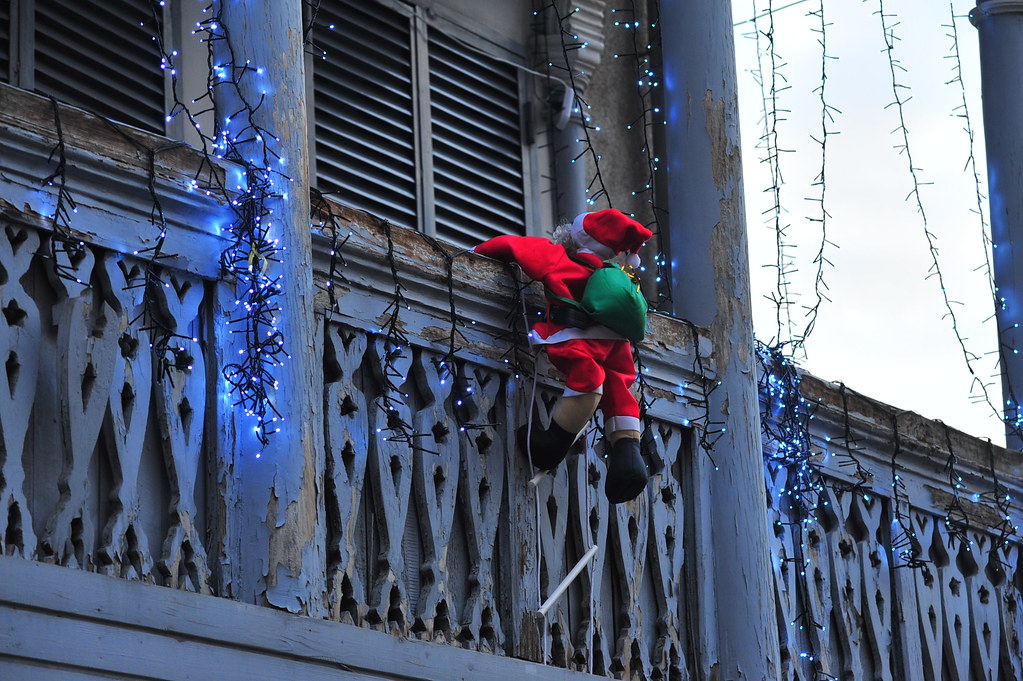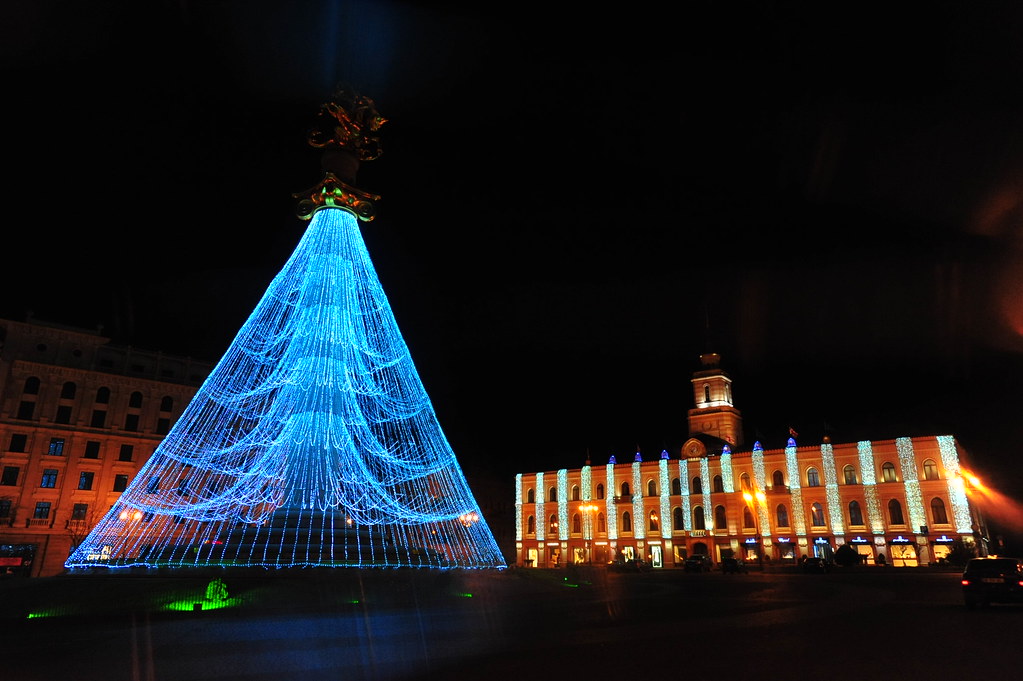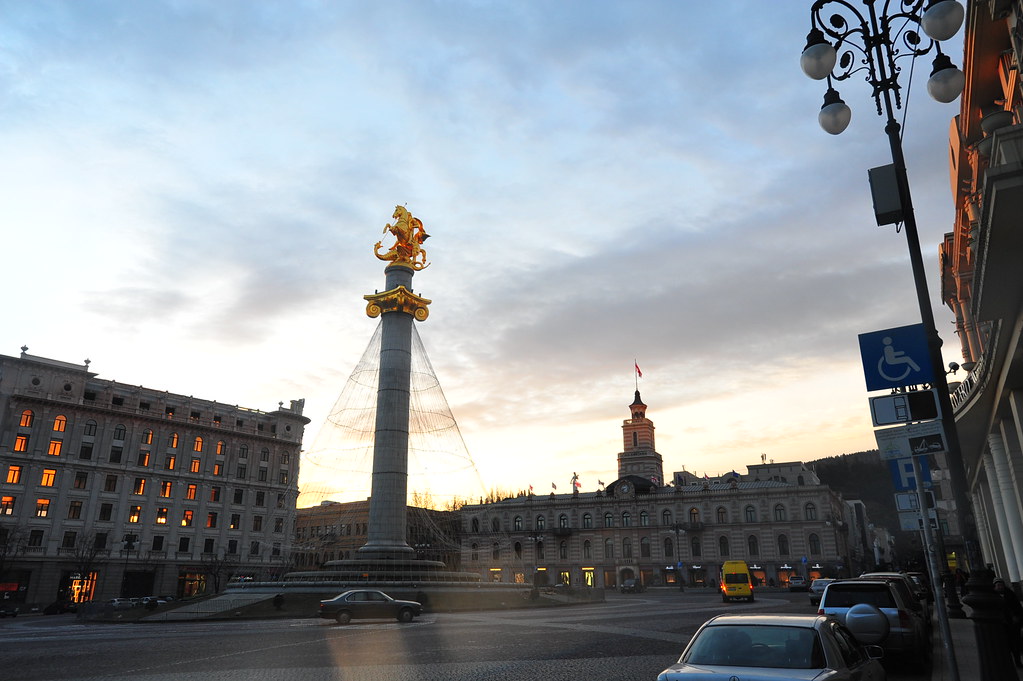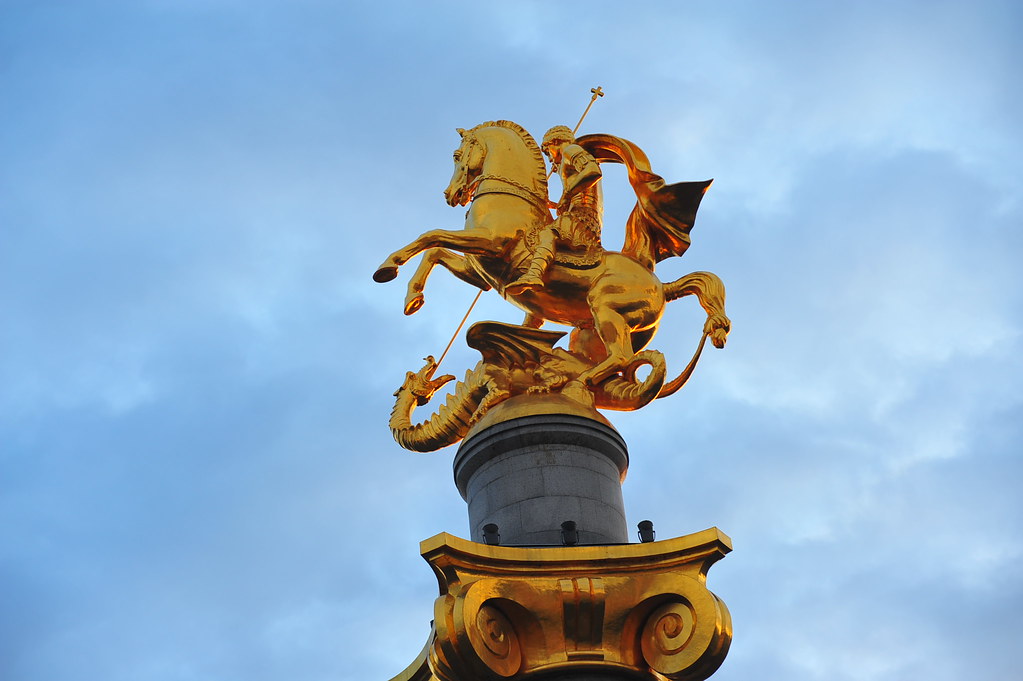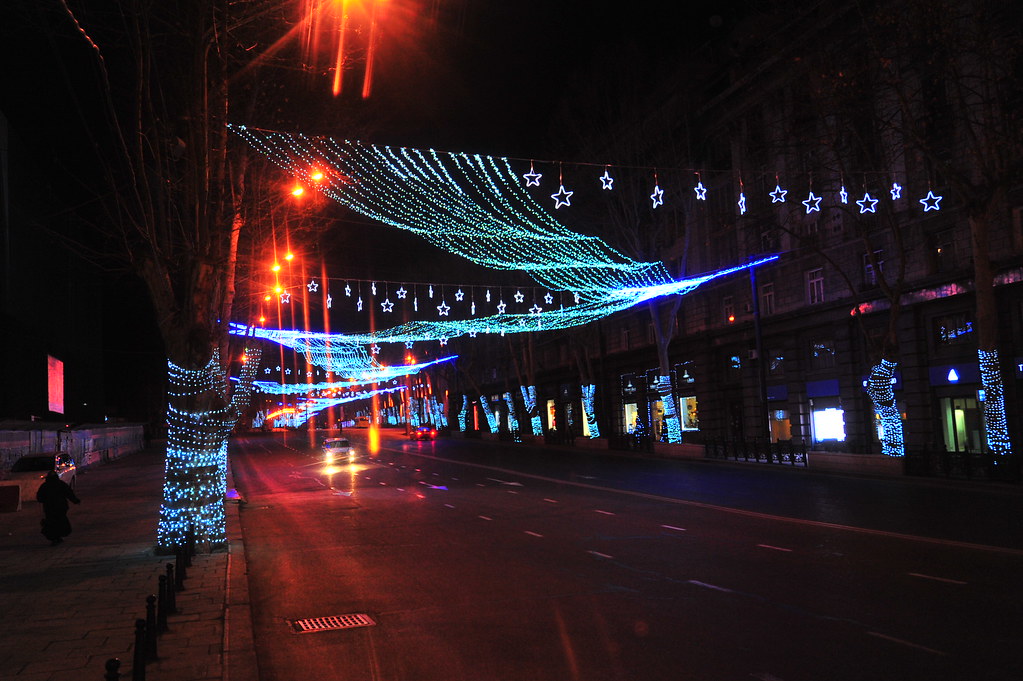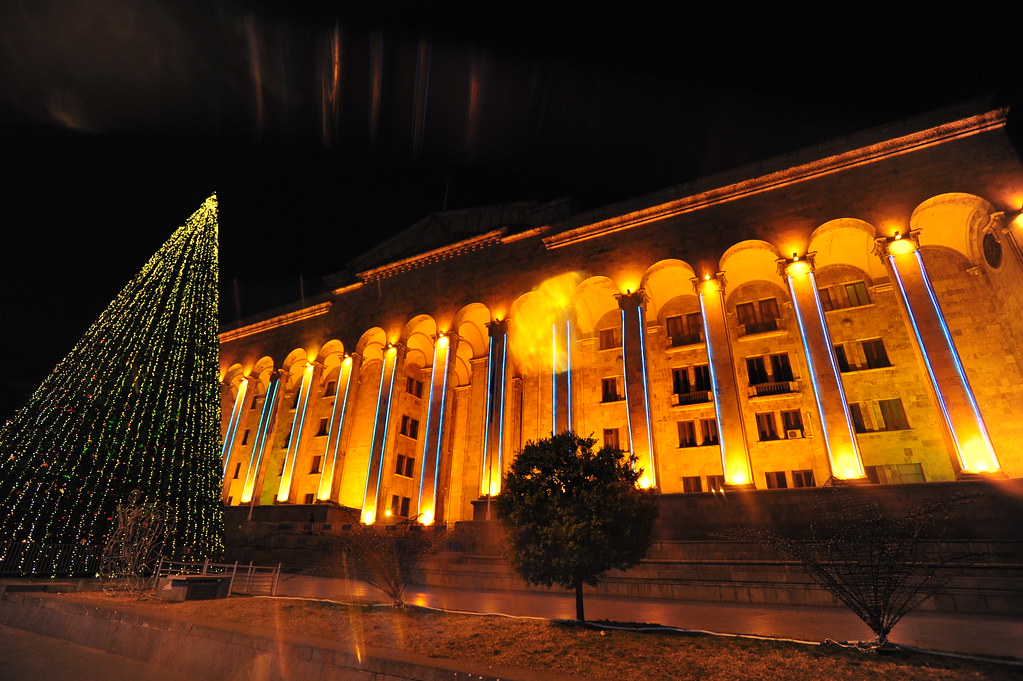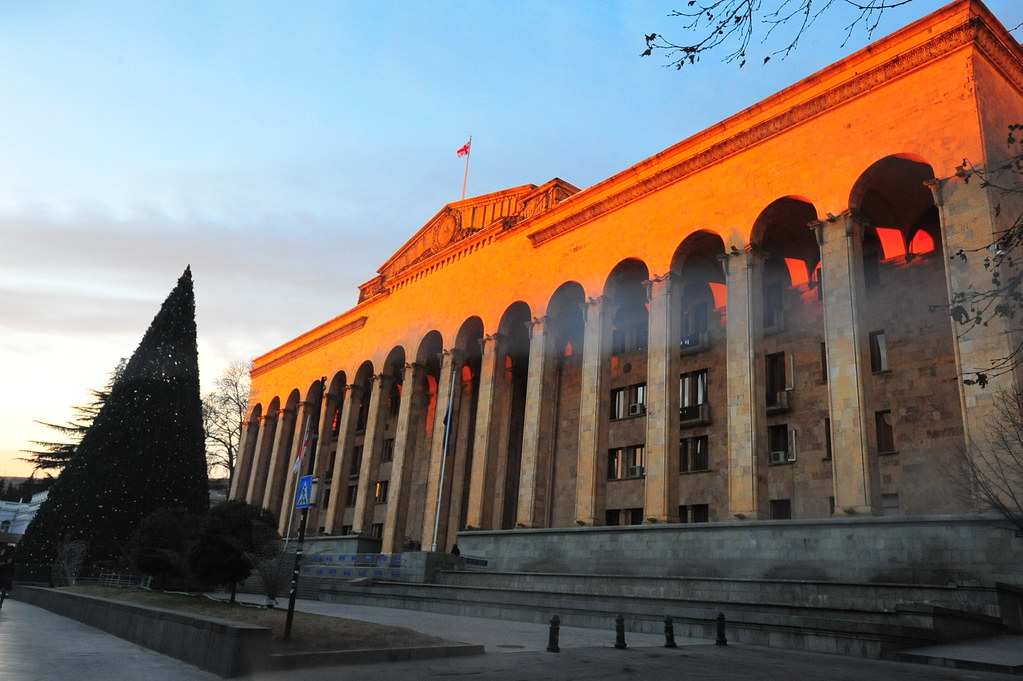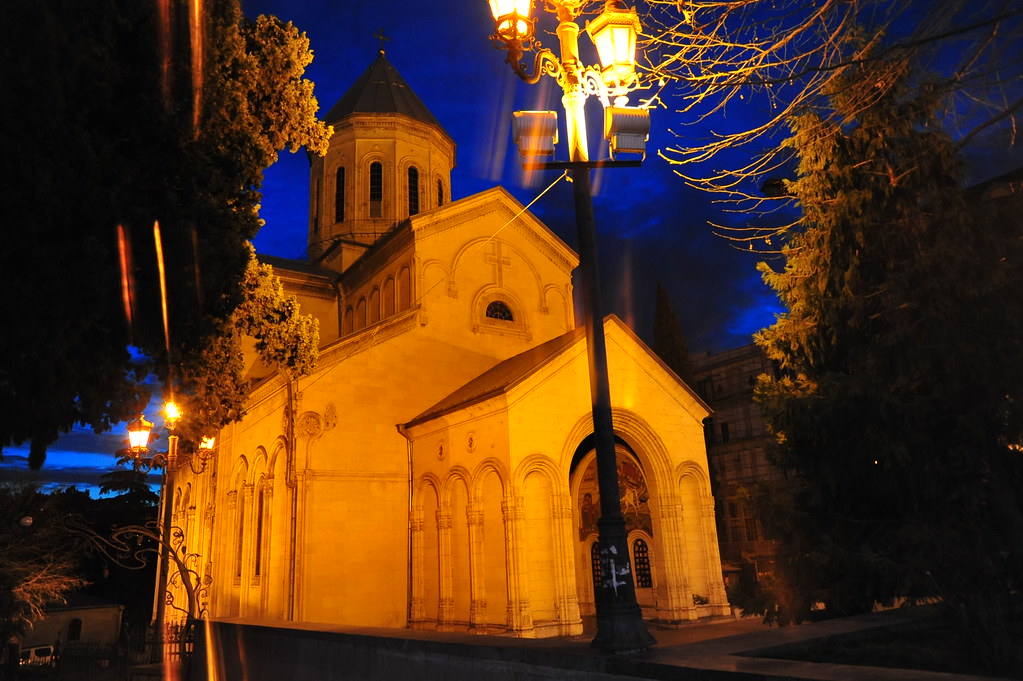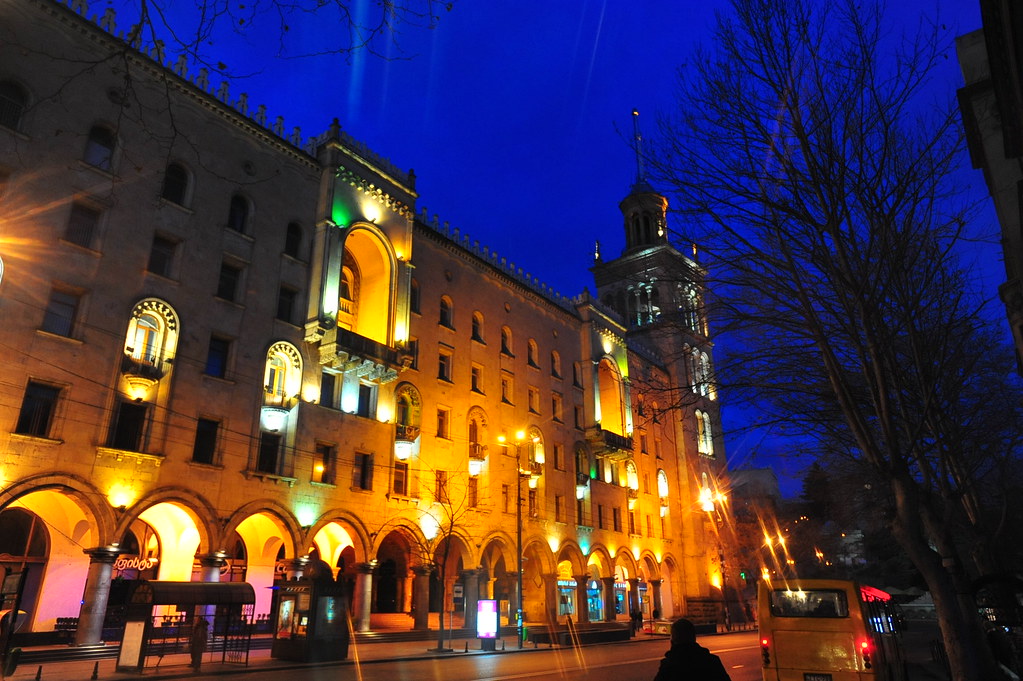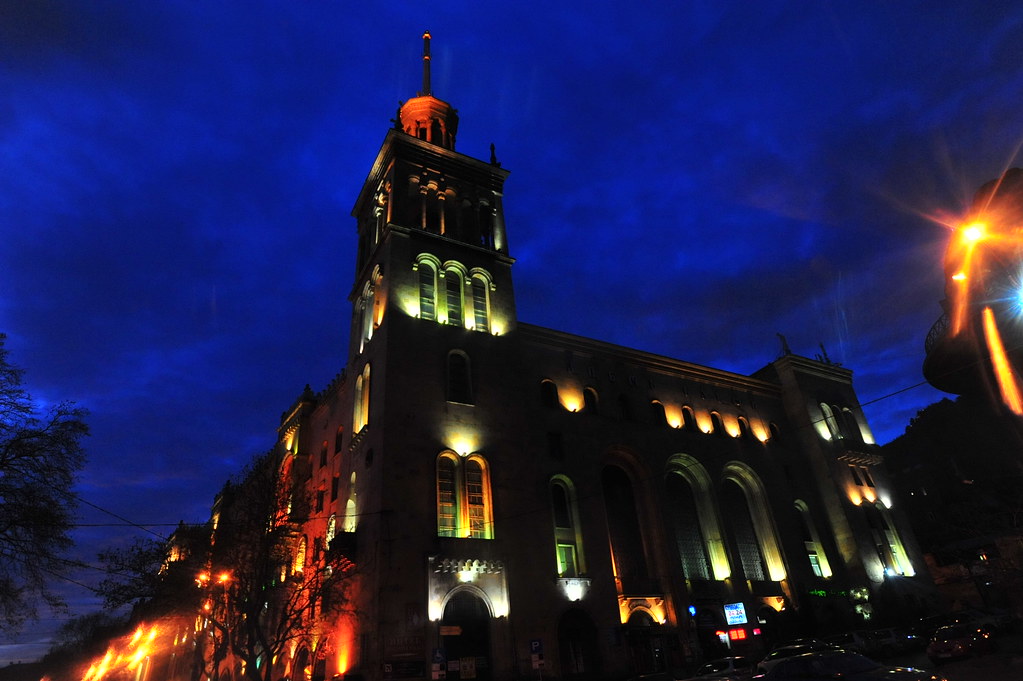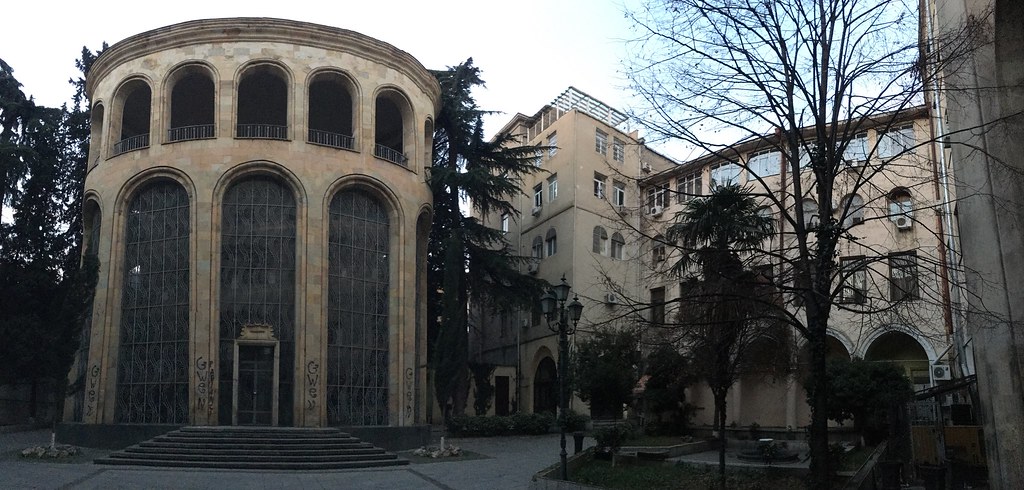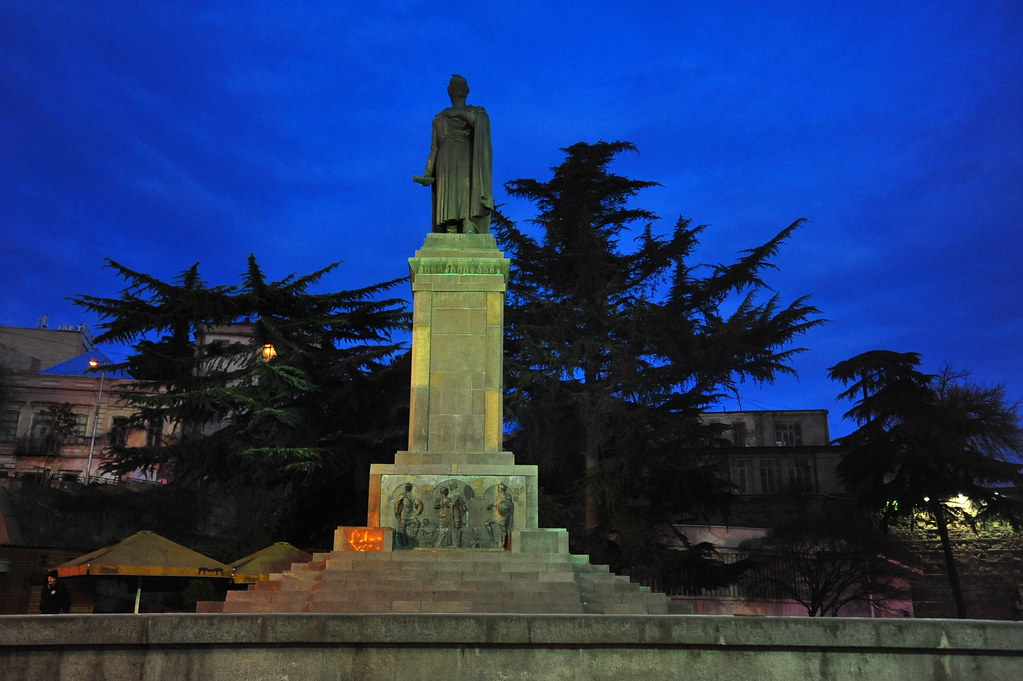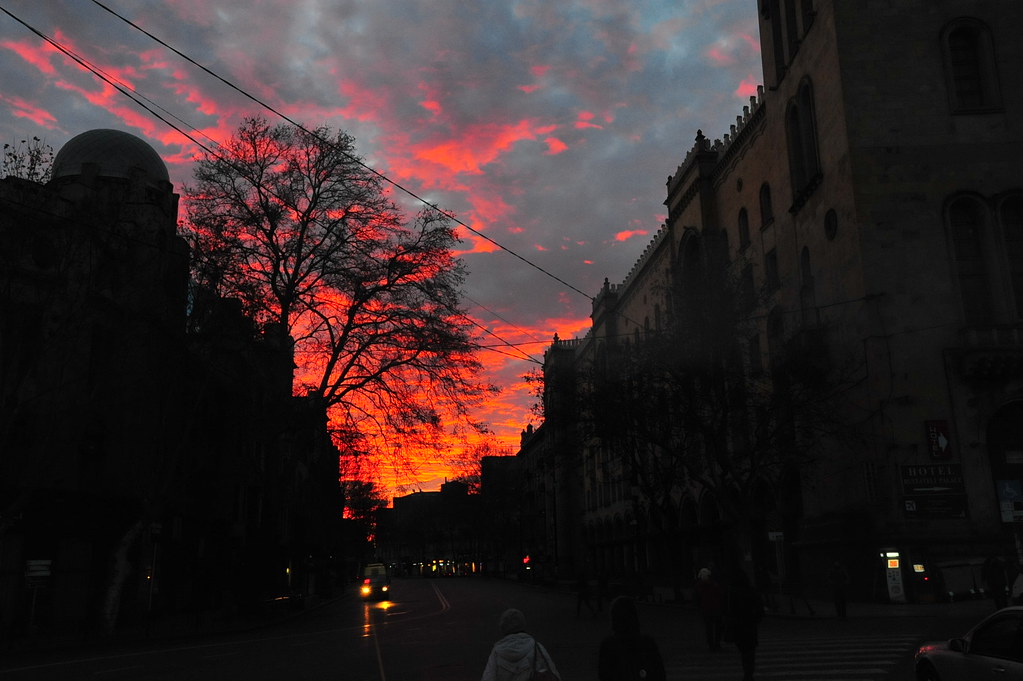From a one-way 4 hour Air Astana flight from Almaty to Tbilisi, I landed at 9:40pm right on schedule. Not only did I get an entry stamp on arrival, I was also handed a free bottle of wine (that’s Georgian hospitality for you) by the passport officer herself.
Celebrating this gift but alas with no corkscrew to begin my lonely inebriation, I then took a cab to Envoy Hostel located at the southern edge of Tbilisi’s Old Town.
After about 15-20 minutes of driving, there’s that superb jaw-dropping moment when your eyes first lay upon a gorgeous city on a hill…
The views from Envoy Hostel’s 3rd floor terrace are even better:
Around 6am the next morning, I started my solo tour of Tbilisi while everyone in the city (save for a few couples making out) was still asleep.
From the hostel I headed up 400m to the Persian-built, Arab-upgraded 4th century-era Nariqala Fortress for sweeping city views of Tbilisi.
Walk west of the fortress, hugging the hill, and you’ll come across to the foot of the Kartilis Deda (Mother Georgia) statue.
She’s holding a glass of wine in one hand and a sword in the other to symbolize both Georgia’s hospitality and willingness to defend itself, respectively.
This is what Mother Georgia gets to see every night:
Walk back down the hill, which path will curve east and lead you to Betlemi Church and the Zoastrian Ateshgah Fire Temple beside each other.
You’ll eventually hit the heart of old town, including the Gudiashvillis baghi park.
Take you time here to explore Old Town, either at night or during the day, and you’ll find a plethora of charming, windy avenues populated by bohemian cafes, bars, youth hostels and various European-style entertainment tucked away in medieval buildings dating as far back as 1795 (when the city rebuilt itself after being sacked by the Persians).
BTW, Tbilisi had also been conquered by none other than the Uzbek National Hero, Timur, himself. This trip has now come full circle.
Old Town ends at the clearing of Tavisuplebis moedani square, with the St George and Dragon monument in the center.
This is also where the main street of Rustaveli gamziri begins, transitioning you from Old Tbilisi to new.
Head north on Rustaveli, and on your left will be the famous Parliament building, the central site of many watershed moments in Georgian history; it was here where 19 hunger strikers met their fate on April 9, 1989, where Georgia declared its independence on April 9, 1991, and where the Rose Revolution of November 22, 2003 transformed Tbilisi overnight from a lawless, dangerous, corrupt slum into a spotless, crime-less, cosmopolitan city that it is today.
On the opposite side is 6th century era Kashveti Church, built by priest (and one of the ascetic “Syrian fathers”) Davit Gareja who returned from the Middle East to spread Christianity in Georgia.
Head up north more and you’ll hit the Academy of Sciences on your left.
The end of your Rustaveli journey will be at the statue of Shota Rustaveli.
At this point I turned around and headed back to Envoy Hostel, admiring the sunrise over Tbilisi and witnessing the city slowly arise from its slumber.
At Envoy Hostel was a car waiting to take me to Gori (the birthplace of Josef Stalin), the South Ossetia border, and Kazbegi.
To be continued in part 2…
![]()
- At time of posting in Tbilisi, Georgia, it was 7 °C - Humidity: 52% | Wind Speed: 32km/hr | Cloud Cover: clear

